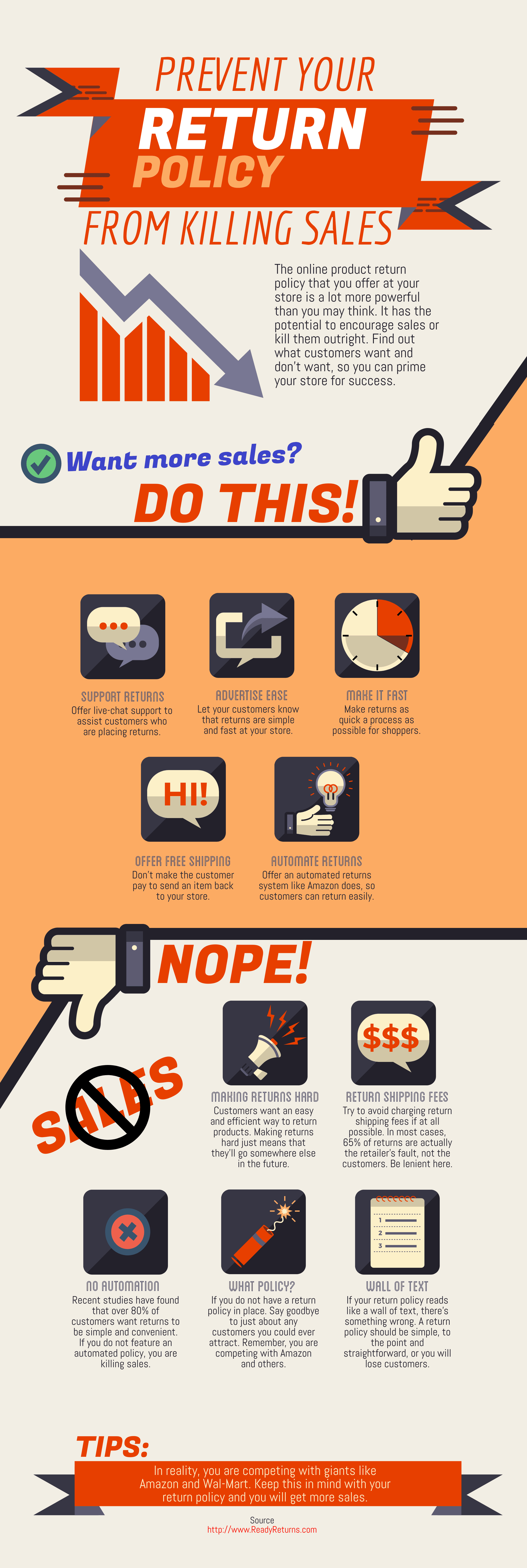Why Retailers Need to Stop Overlooking the “After Buying” Experience

In the world of ecommerce, there’s one essential time that virtually everyone overlooks: the after-buying experience.
This time frame, generally defined as the period when people have to return something and come back to your site, is an essential opportunity for ecommerce sites. Unfortunately, it’s also one that many e-tailers miss taking advantage of.
Here’s what you can do to make after-buying and returns as seamless as buying and as convenient as possible for you and for your customer base.
The “After Buying” Period
A customer buys a product from you and walks away. A few days later, though, they’re back and they want to return what they just purchased. How do you handle this situation?
If you’re like most online retailers, you’re probably promoting your company through all the traditional channels – SEO, PPC, SEM, retargeting, content outreach, and more. But did you know that a streamlined return process could be some of your best advertising yet?
Wondering why commerce returns offer such a strong opportunity? Consider this:
According to the 2017 UPS Pulse of the Online Shopper Study, 75% of all U.S. online shoppers ship items back to the retailer, and a whopping 79% of them say that free shipping on returns is essential to them when they make purchasing decisions.
So, yes, free shipping is important. So, too, however, is the experience after a customer ships a return back. As it stands right now, 44% of customers made a new purchase online after processing a return. Their willingness to do this depends in large part on how you handle their returns.
How to Make Returns Profitable
You’ve produced a great product and sold it, but returns are inevitable. Here’s how you can stop overlooking the after-buying experience and ensure your customer returns are streamlined, simple and easy for both you and your customers.
1. Write a Bulletproof Return Policy
You’re familiar with Zappos, right? If so, it’s likely because the brand made it big with their no-questions-asked return policy. It’s simple, and it works like this: if you’re not 100% satisfied with your purchase from Zappos, you can return your items for free for 365 days.
If you want to make your returns as straightforward as possible, take a hint from Zappos. When returns are fast, easy and free, customers are more likely to engage with your brand again after they return their initial purchase.
With this in mind, make sure your return policy caters to your customers. It should offer a large return window, free return shipping and flexible return reasons.
2. Fix Your Customers’ Issues
Did you know that 50% of customer returns are actually the merchant’s fault? With this in mind, it’s essential to rectify anything you did wrong to create the return.
When you fix the issues you have control over quickly and completely, it creates customer confidence and increases the chances that people will come back to shop with you again.
3. Make Returns Free
One of the best things you can do for the after-buying period is to make returns free. Right now, about 49% of online retailers offer free return shipping.
This is according to a new study released by the National Retail Federation and reported on by The Wall Street Journal. While it’s true that offering free returns can raise costs for merchants, it will also promote consumer confidence and help you make more sales down the road.
Need an example of this? Consider Amazon’s Prime service, which offers free, prepaid returns and free two-day shipping. Buyers who use this service can rest assured that if they need to return the product, they’ll be able to do so quickly and easily.
4. Make Returns Digital
If you’re not already offering online returns, you should be. Here’s why: digital returns check all the boxes needed by the after-purchase period. In addition to being easy and automated, they’re completely self-serve, which allows your customers to access the return process on their time.
A service like ReadyReturns is a great way to introduce online returns into your funnel and ensure that your customers are getting what they need from your service.
If your customers aren’t accustomed to online returns, provide a few streamlined Q&A pages to help them learn the ropes, or put out a series of instructional videos. Remember, the easier the process is to use, the more likely your customers are to take advantage of it.
5. Make it Fun
There’s no reason that the after-buying process should feel like running a gamut of complicated hoops. Instead, make it fun and lighthearted for your customers.
Remember: returns happen, and the more you can treat your customers like trusted friends and supportive shoppers, the less likely you are to run into retention problems down the road. This also has the benefit of encouraging your customers to rave about your brand to their friends!
After all, loyal customers are worth an average of 10x as much as their first purchases, and you have a 60-70% probability of selling to an existing customer, compared to a 5-20% probability of selling to a new prospect.
With this in mind, keep the copy on your return pages fun and straightforward. Help customers understand what to expect, how to use the process and the timeframes of their returns. Make your customer service department easy to access, and ensure your shoppers are getting what they need from the after-buying experience.
Improving the After-Buying Experience
If you run an ecommerce business, returns are bound to happen. Luckily, they don’t have to spell disaster for your brand. By creating a customer-facing after-buying process that is easy, fast, fun, and streamlined, you can retain the customers who do return your products and earn new ones at the same time.
This, in turn, helps keep your brand competitive and allows you to stand out in your industry, which is good for everyone.
Need even more convincing? Take a look at this infographic we’ve created below. It provides even more reasons why easy returns equal happier, long term customers and more sales for your online store.

Share On:








